Kodak TRI-X Reversal Film 7266 Handleiding
Kodak
Niet gecategoriseerd
TRI-X Reversal Film 7266
Bekijk gratis de handleiding van Kodak TRI-X Reversal Film 7266 (4 pagina’s), behorend tot de categorie Niet gecategoriseerd. Deze gids werd als nuttig beoordeeld door 10 mensen en kreeg gemiddeld 4.7 sterren uit 5.5 reviews. Heb je een vraag over Kodak TRI-X Reversal Film 7266 of wil je andere gebruikers van dit product iets vragen? Stel een vraag
Pagina 1/4

©Eastman Kodak Company, 2013
April 2013 • H-1-7266t
TECHNICAL DATA /
BLACK-AND-WHITE REVERSAL FILM
KODAK TRI-X Reversal Film 7266
We are committed to black & white film—improvements to
our family of reversal films prove it. New KODAK TRI-X
Reversal Film 7266 offers finer grain and increased
sharpness, and includes EASTMAN KEYKODE Numbers
for easy cross-reference of shots in minutes, not hours.
Reduced static support allows for a cleaner image
throughout the filmmaking process. And because our new
films do not require processing in a bleach containing
heavy metals, they are easier on the environment. Our
improved films provide the rich blacks and high contrast
you have come to expect from KODAK Black & White
reversal films.
KODAK TRI-X Reversal Film 7266 (16 mm) is a
high-speed, panchromatic black-and-white film with an
antihalation undercoat that makes it suitable for general
interior photography with artificial light. It can also be used
in daylight and is particularly useful for sports pictures
taken at regular speed or slow motion in weak light
(overcast sky or late in the day). This film is characterized
by excellent tonal gradation and sharpness.
When processed as a reversal film, the resulting positive
can be used for projection or for duplication. If processed
as a negative material by conventional methods, the film
will yield satisfactory results, although there will be some
loss in speed and an increase in granularity.
BASE
KODAK TRI-X Reversal Film 7266 has a grey acetate safety
base with an additional anti-halation undercoat. The back
side of the base contains an anti-static layer with a
carnauba wax lubricant.
DARKROOM RECOMMENDATIONS
Reversal Processing
All processing operations should be carried out in total
darkness until the bleaching step has been completed. If
necessary, the film can be examined (for a few seconds
only) after development is 50 percent complete. Use a
KODAK 3 Safelight Filter / dark green, with a 15-watt bulb,
no closer to the film than 1.2 metres (4 feet). Following
bleaching, normal room lighting can be used.
Negative Processing
No safelight is recommended until after the stop bath.
Unprocessed films must be handled in total darkness.
STORAGE
Store unexposed film at 13°C (55°F) or lower. For extended
storage, store at -18°C (0°F) or lower. Process exposed film
promptly. Store processed film according to the
recommendations in ANSI/PIMA IT9.11-1998: for
medium-term storage (minimum of ten years), store at
10°C (50°F) or lower at a relative humidity of 20 to
30 percent; for extended-term storage (for preservation of
material having permanent value), store at 2°C (35°F) or
lower at a relative humidity of 20 to 30 percent. For active
use, store at 25°C (77°F) or lower, at a relative humidity of
50 +/- 5 percent. This relates to optimized film handling
rather than preservation; static, dust-attraction and
curl-related problems are generally minimized at the
higher relative humidity. After usage, the film should be
returned to the appropriate medium- or long-term storage
conditions as soon as possible.
For more information about medium- and long-term
storage, see ANSI/PIMA IT9.11-1998, SMPTE RP131-2002,
and KODAK Publications No. H-845, The Essential
Reference Guide for Filmmakers.

2KODAK TRI-X Reversal Film 7266 • H-1-7266t
EXPOSURE INDEXES
Tungsten (3200K) - 160 Daylight - 200
1
Use these indexes with incident- or reflected-light
exposure meters and cameras marked for ISO or ASA
speeds or exposure indexes. These indexes apply for meter
readings of average subjects made from the camera
position or for readings made from a gray card of
18-percent reflectance held close to and in front of the
subject. For unusually light- or dark-colored subjects,
decrease or increase the exposure indicated by the meter
accordingly.
EXPOSURE TABLE - TUNGSTEN LIGHT
At 24 frames per second (fps), 170-degree shutter
opening:
*
At 18 frames per second, use 3/4 of the footcandles (fc) shown. When the
film is used as a negative material, the values specified should be doubled.
Lighting Contrast -
The recommended ratio of key-light-plus-fill-light to fill
light is 2:1 or 3:1. However, you may use 4:1 or greater
when a particular look is desired.
FILTER FACTORS
*
For use in bright sunlight to reduce the exposure without modifying color
rendering or depth of field. This filter which has a neutral density of 0.90
provides a reduction in exposure equivalent of 3 full stops.
RECIPROCITY CHARACTERISTICS
You do not need to make any exposure adjustments for
exposure times from 1/1,000 to 1 second. If your exposure
is in the 1/10,000 second range, it is recommended that
you increase your exposure by
1
⁄
2
stop.
1.Super 8 automatic cameras will expose the film at ASA 160 due to the ANSI
standard cartridge.
Lens Aperture f/1.4 f/2 /2.8f f/4 f/5.6 f/8
Footcandles
Required
*
16 32 64 125 250 500
KODAK
WRATTEN
Filter No.
3 8 8N5 12 15 21 25 29 96
*
Daylight 1.5 2 4 2 2.5 3 10 40 8
REVERSAL PROCESSING
KODAK B&W Reversal Process
This film should be processed with KODAK B&W
Reversal Process Kit Chemicals or with solutions prepared
according to the formulas presented in KODAK
Publication No.H-24.15, Manual for Processing KODAK
Motion Picture Films, Module 15.
Note: KODAK B&W Reversal First Developer and
Replenisher (D-94A) and KODAK B&W Reversal Bleach
and Replenisher (R-10) should be used with this film.
The recommended starting points for processing times
and temperatures are shown in the table below. Actual
processing times may differ from the ones shown because
of machine design variables, such as film transport speed,
degree of solution agitation, amount of solution carry-over,
etc.
Notice: Observe precautionary information on product labels and on the
Material Safety Data Sheets.
IDENTIFICATION
After processing, the product code numbers 7266,
emulsion and roll number identification, emulsion letter
designator ED, and KEYKODE number are visible along the
length of the film.
AVAILABLE ROLL LENGTHS
For information on film roll lengths, check Kodak's Motion
Picture Films product catalog or see a Kodak sales
representative in your country.
Process Step Time
24.4°C (76° )F
First Developer
KODAK B&W Reversal First Developer
and Replenisher (D-94A)
60 sec
Wash 30 sec
KODAK B&W Reversal Bleach and
Replenisher (R-10) 60 sec
Wash 30 sec
Clearing Bath 30 sec
Wash 30 sec
Re-exposure 800 footcandle seconds
Second Developer
KODAK B&W Reversal Developer and
Replenisher (D-95)
30 sec
Wash 30 sec
Fixer 30 sec
Wash 2 min

KODAK TRI-X Reversal Film 7266 • H-1-7266t 3
IMAGE STRUCTURE
The modulation-transfer curves and the diffuse
rms granularity were generated from samples of 7266 Film
exposed with tungsten light and processed in the
recommended reversal process at 24.4⋅C (76⋅F). For more
information on image-structure characteristics, see
KODAK Publication No. H-845, The Essential Reference
Guide for Filmmakers.
NOTICE: The sensitometric curves and data in this
publication represent product tested under the conditions
of exposure and processing specified. They are
representative of production coatings, and therefore do
not apply directly to a particular box or roll of photographic
material. They do not represent standards or specifications
that must be met by Eastman Kodak Company. The
company reserves the right to change and improve
product characteristics at any time.
Sensitometry
Sensitometric curves determine the change in density on
the film for a given change in log exposure.
Characteristic Curve
1.0
LOG EXPOSURE (lux-seconds)
4.0
0.0
2.0
DENSITY
1.0
2.0
3.0
1.0 0.0
Sensitometry:
Exposure:
Process: 60 Seconds at 76F (24C)
Daylight 1/50 sec
Diffuse visual
2.03.0
Modulation Transfer Function
The "perceived" sharpness of any film depends on various
components of the motion picture production system. The
camera and projector lenses and film printers, among other
factors, all play a role. But the specific sharpness of a film
can be measured and is charted in the Modulation Transfer
Function Curve.
Modulation Transfer Function Curve
This graph shows a measure of the visual sharpness of
this film. The x-axis, "Spatial Frequency," refers to the
number of sine waves per millimeter that can be resolved.
The y-axis, "Response," corresponds to film sharpness.
The longer and flatter the line, the more sine waves per
millimeter that can be resolved with a high degree of
sharpness—and, the sharper the film.
Note: These photographic modulation-transfer values
were determined by using a method similar to the one
described in ANSI Standard PH2.39-1977(R1990). The
film was exposed with the specified illuminant to spatially
varying sinusoidal test patterns having an aerial image
modulation of a nominal 60 percent at the image plane,
with processing as indicated. In most cases, the
photographic modulation-transfer values are influenced by
development-adjacency effects and are not equivalent to
the true optical modulation-transfer curve of the emulsion
layer in the particular photographic product.
Sensitometry:
Exposure:
Process: 60 Seconds at 68F (24C)
Tungsten
Diffuse visual
1001 2 3 4 5 1 0 20 50 200 600
SPATIAL FREQUENCY (cycles/mm)
RESPONSE (%)
10
1
2
5
3
7
30
20
100
70
50
200
Product specificaties
| Merk: | Kodak |
| Categorie: | Niet gecategoriseerd |
| Model: | TRI-X Reversal Film 7266 |
Heb je hulp nodig?
Als je hulp nodig hebt met Kodak TRI-X Reversal Film 7266 stel dan hieronder een vraag en andere gebruikers zullen je antwoorden
Handleiding Niet gecategoriseerd Kodak

27 Augustus 2024

19 Maart 2024

18 Juli 2023

18 Juli 2023

18 Juli 2023

18 Juli 2023

18 Juli 2023

18 Juli 2023

18 Juli 2023

18 Juli 2023
Handleiding Niet gecategoriseerd
- Foliatec
- Kiloview
- Vestfrost
- Rean
- Canopia
- Vitek
- ICE Watch
- Dahua Technology
- Avaya
- Fersgo
- Carnielli
- Infento
- Bella
- Nite Ize
- Flavour Blaster
Nieuwste handleidingen voor Niet gecategoriseerd

31 Juli 2025
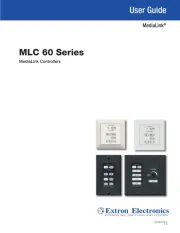
31 Juli 2025
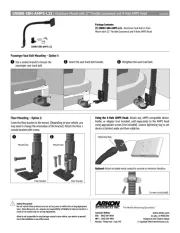
31 Juli 2025
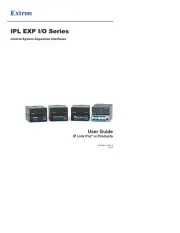
31 Juli 2025

31 Juli 2025
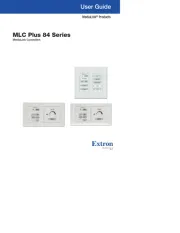
31 Juli 2025

30 Juli 2025
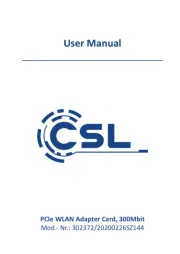
30 Juli 2025
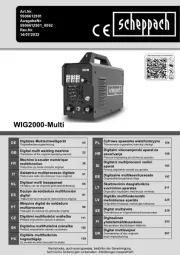
30 Juli 2025
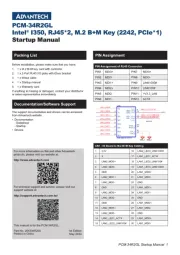
30 Juli 2025